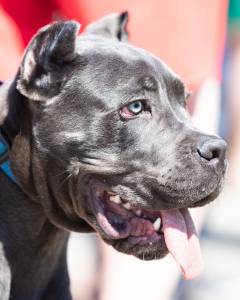
Fleas are small, wingless insects that survive by feeding on the blood of mammals. They are a common nuisance for dogs, especially those that spend time outdoors or come into contact with other animals. Flea infestations can cause a range of problems for your pet, including itching, skin irritation, and even allergic reactions in some cases.
One of the most telltale signs that your dog has fleas is excessive scratching or biting at their skin. If you notice that your dog is constantly itching, particularly around the base of their tail or on their belly, it could be a sign that they have fleas. Keep an eye out for any red or irritated areas on their skin, as these could indicate flea bites.
Another common indicator of a flea infestation is “flea dirt,” which is actually flea feces. Flea dirt looks like small, dark specks and may be found on your dog’s skin or coat. To check for flea dirt, use a fine-tooth comb to groom your dog, paying close attention to areas where fleas are most likely to congregate, such as the neck and back.
If you suspect that your dog has fleas, you may also notice tiny black or brown insects moving quickly through their fur. Fleas are adept at jumping and can move from one host to another with ease. If you see fleas on your dog, it’s important to take action promptly to prevent the infestation from spreading further.
Aside from these visible signs, anemia can occur in severe cases of flea infestations in dogs. Fleas consume a significant amount of blood, and if left untreated, this can lead to anemia, particularly in puppies or smaller dogs. Anemia can cause weakness, pale gums, and lethargy in affected dogs. If you notice these symptoms, it’s crucial to seek veterinary care promptly.
Preventing and treating flea infestations in dogs involves a multi-faceted approach. Regular grooming and bathing can help to keep your dog’s coat clean and reduce the likelihood of flea infestations. Additionally, using flea prevention products, such as topical treatments or oral medications prescribed by your veterinarian, can help to protect your dog from fleas.
If you suspect that your dog has fleas, it’s essential to consult with your veterinarian to develop an appropriate treatment plan. Your vet can recommend the best course of action based on your dog’s individual needs and the severity of the infestation. They may also provide guidance on environmental control measures to eliminate fleas from your home.
In conclusion, being aware of the signs of a flea infestation in your dog is crucial for maintaining their health and well-being. By keeping an eye out for symptoms such as excessive scratching, flea dirt, and visible fleas, you can take proactive steps to address the issue and prevent it from worsening. Remember, your veterinarian is your best resource for addressing flea infestations and keeping your dog happy and healthy.[/fusion_text]



